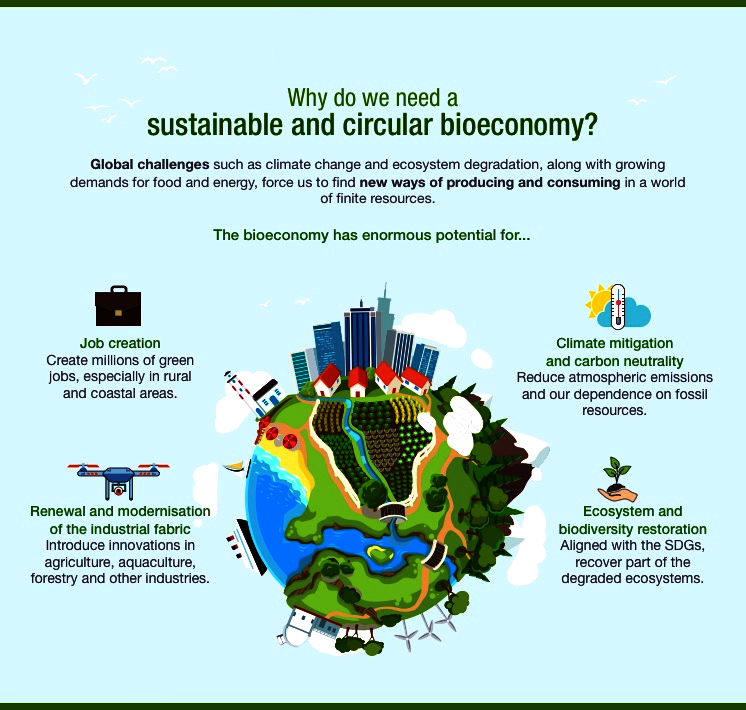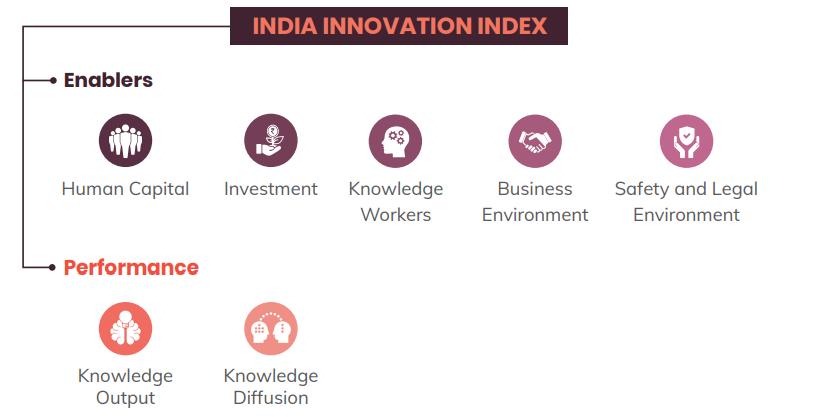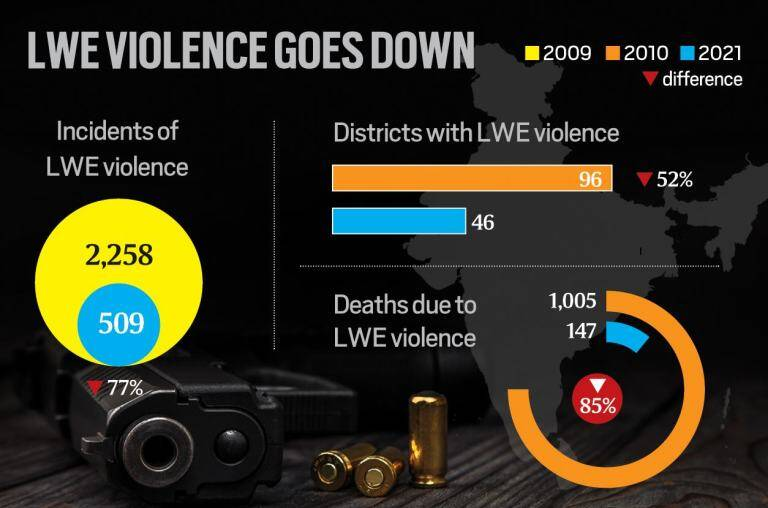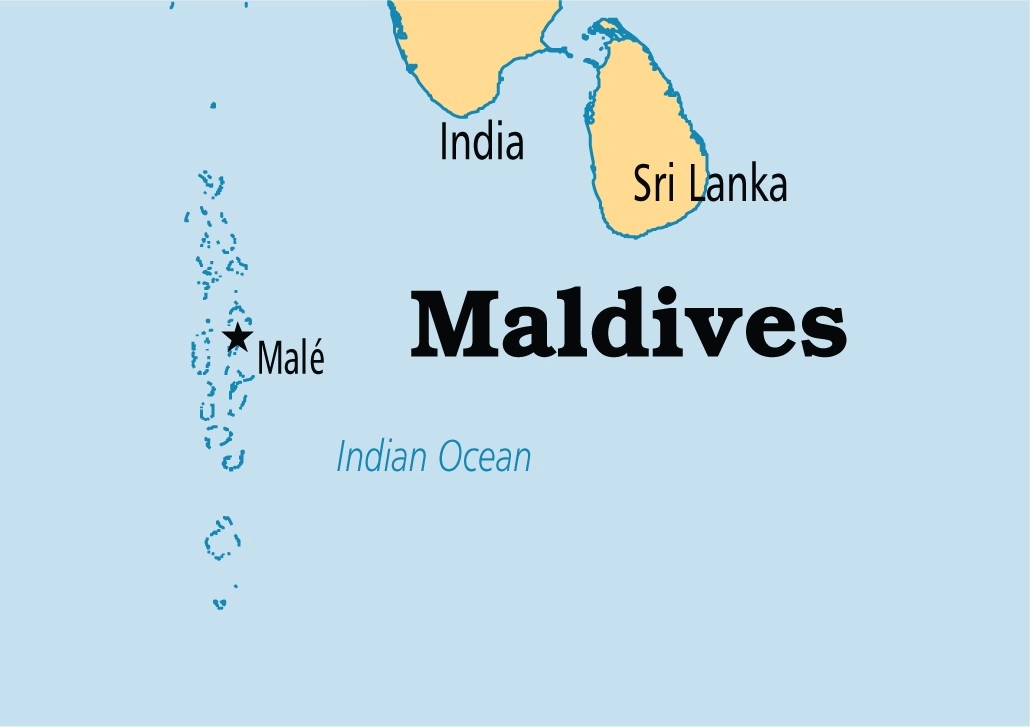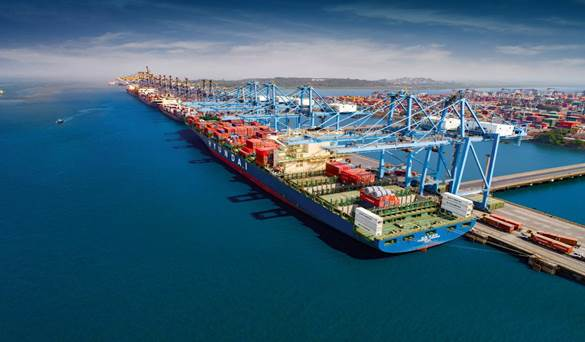Economy
Bioeconomy
For Prelims: Bioeconomy, India’s Bioeconomy Report 2022
For Mainns: Bioeconomy and its advantages
Why in News?
Recently, Biotechnology Industry Research Assistance Council (BIRAC) released India’s Bioeconomy Report 2022.
- During the release, the government launched a special Biotech Ignition Grant call for North East Region (BIG-NER) and announced financial support of up to Rs 50 Lakhs each to 25 startups and entrepreneurs from North East Region to develop biotech solutions.
- BIRAC is a not-for-profit Section 8, Schedule B, Public Sector Enterprise, set up by Department of Biotechnology (DBT).
What are the Key Highlights of the Report?
- India’s bioeconomy is likely to touch USD 150 billion by 2025 and over USD 300 billion by 2030.
- The country’s bioeconomy has reached over USD 80 billion in 2021, registering a 14.1 percent growth over USD 70.2 billion in 2020.
- On average, at least three biotech startups were incorporated every day in 2021 (a total of 1,128 biotech startups set up in 2021) and the industry crossed USD 1 billion in research and development spending.
- India has the second highest number of USFDA-approved manufacturing plants outside the US.
- USFDA: US Food and Drug Administration
- Vaccination:
- India administered nearly 4 million doses of Covid-19 vaccines per day (a total of 1.45 billion doses given in 2021).
- Covid-19:
- The country conducted 1.3 million Covid-19 tests each day in 2021 (a total of 506.7 million tests).
What is Bioeconomics?
- About:
- As per, the United Nations Food and Agriculture Organization (FAO), Bio-economics could be defined as the production, use, and conservation of biological resources, including related knowledge, science, technology, and innovation to provide information, products, processes, and services to all economic sectors with the aim of moving towards a sustainable economy.
- Historical Background:
- The term bioeconomy became popular in the first decade of the 21st century following its adoption by the European Union (EU) and the Organisation for Economic Co-operation and Development (OECD) as a framework for promoting the use of biotechnology to develop new products and markets.
- Examples:
- Food systems occupy the largest niche in the bioeconomy. To these systems, which include
- Sustainable agriculture,
- Sustainable Fishing,
- Forestry and aquaculture,
- Food and feed manufacturing,
- Bio-Based Products:
- Bioplastics,
- Biodegradable clothing.
- Food systems occupy the largest niche in the bioeconomy. To these systems, which include
What is Circular Bioeconomy?
- Bioeconomy aims to drive both sustainable development and circularity. In particular, the principles of the circular economy — reuse, repair and recycle — are a fundamental part of the bioeconomy.
- The total amount of waste and its impact is reduced through reuse, repair, and recycling. It also saves energy and minimizes air and water pollution, thus helping to prevent damage to the environment, climate and biodiversity.
How is India moving Forward in Bioeconomy?
- There are various sectors which are contributing to the growth of India’s Bioeconomy sector like,
- Bio-Industry, as this sector has got fillip from the Prime Ministers vision of Atmanirbhar Bharat and India becoming “energy independent” by 2047.
- Further, the Indian Government has approved the amendments to the National Policy on Biofuels and took decisions to increase biofuel production and advance the introduction of ethanol blended petrol with up to 20% blend from April 2023.
- Another sector like Bio-Agri, which comprises of Bt Cotton, pesticides, marine biotech, and animal biotech has the potential to nearly double its Bioeconomy contribution from USD10.5 billion to USD 20 billion in 2025.
- Before the pandemic, India was the second largest vaccine exporter by volume according to various research studies.
- Bio-Industry, as this sector has got fillip from the Prime Ministers vision of Atmanirbhar Bharat and India becoming “energy independent” by 2047.
What are the Indian Initiatives related to Bioeconomy?
- For Biopharma:
- National Biopharma Mission, ‘Innovate India’ 2017, a Department of Biotechnology (DBT) programme worth US$ 250 million, aims to bring together industry and academia in order to promote entrepreneurship and indigenous manufacturing in biopharma.
- For Promoting Startups:
- 35 Bio incubators have been set up across India with world-class facilities.
- The first International Incubator- Clean Energy International Incubator has been set up under Mission Innovation by DBT & BIRAC.
- Startups from 23 participating EU countries can potentially come & incubate in India and likewise, startups from this incubator can go to the partnering countries facilitating access to global opportunities. The department is supporting 4 Bio-clusters (NCR, Kalyani, Bangalore, and Pune).
- National Mission on Bioeconomy: Amid attempts to boost rural economy by using bio-resources, a 'National Mission on Bioeconomy' was launched by the Institute of Bio-resources and Sustainable Development under the Science and Technology Ministry, in 2016.


Indian Economy
India Innovation Index 2021: NITI Aayog
For Prelims: NITI Aayog, India Innovation Index
For Mains: India Innovation Index, its Recommendations
Why in News?
Recently, India Innovation Index Report 2021 was released by NITI (National Institution for Transforming India) Aayog in which Karnataka retained its top position in the major States category.
- This is the third edition of the Report, which highlights the scope of innovation analysis in the country by drawing on the framework of the Global Innovation Index.
- The number of indicators has increased from 36 (in the India Innovation Index 2020) to 66 (in the India Innovation Index 2021).
What is the India Innovation Index?
- About:
- It is a comprehensive tool for the evaluation and development of the country’s innovation ecosystem.
- It ranks the states and the union territories on their innovation performance to build healthy competition amongst them.
- Institutions Involved:
- NITI Aayog with the Institute for Competitiveness.
- Indicators Used:
- There are 7 pillars in the index - five ‘Enabler’ pillars measure the inputs and two ‘Performance’ pillars measure the output.
- The indicators that the survey uses includes the level and quality of education and parameters such as:
- Number of PhD students and knowledge-intensive employment.
- Enrolment in engineering and technology and number of highly skilled professionals.
- Investment in R&D and number of patents and trademark applications filed.
- Internet subscribers.
- FDI inflows, business environment and safety and legal environment.
What are the Highlights of the Report?
- Categories:
- The Innovation Index is divided into three categories—major states, Union Territories, and hill and North East states.
- Major States:
- Top States: Karnataka topped with a score of 18.05 followed by Telangana and Haryana.
- Karnataka’s success is attributed to its peak performance in attracting FDI (Foreign Direct Investment) and a large number of venture capital deals.
- Bottom States: Bihar, Odisha and Chhattisgarh scored the lowest on the index, which put them at the bottom in the “major States” category.
- Chhattisgarh ranked last with 10.97 points.
- Top States: Karnataka topped with a score of 18.05 followed by Telangana and Haryana.
- Hill and North-East States:
- Manipur is leading the category followed by Uttarakhand and Meghalaya.
- Nagaland ranked last (10th).
- Manipur is leading the category followed by Uttarakhand and Meghalaya.
- Union territories/Small States:
- Chandigarh is the top performer with a Score 27.88 followed by Delhi and Andaman and Nicobar.
- Ladakh Ranked last (9th).
- Chandigarh is the top performer with a Score 27.88 followed by Delhi and Andaman and Nicobar.
- Challenges:
- On an average, the country has not performed well in the knowledge worker pillar, as much as it has in the human capital pillar.
- The expenditure on human capital has been unable to create that knowledge base in the country.
- Innovation is skewed against the manufacturing sector due to the problems pertaining to and the missing middle.
- Missing middle, i.e., there are too many tiny, informal enterprises, and too few large, formal ones to employ thousands of people.
What are the Recommendations?
- GDERD (Gross Domestic Expenditure on R&D) needs considerable improvement and should touch at least 2%, which would play an instrumental role in India achieving the goal of a 5 trillion economy and further influence its innovative footprint across the globe.
- Increasing GDERD promotes private sector participation in R&D and closing the gap between industry demand and what the country produces through its education systems.
- Countries that spend less on GDERD fail to retain their human capital in the long run and the ability to innovate is dependent on the quality of human capital; India’s GDERD as a percentage of GDP (Gross Domestic Product) stood at about 0.7%.
- The private sector needs to pick up pace in R&D, public expenditure is productive up to some extent; once the growth follows a trajectory, it is desirable to shift to R&D mostly driven by the private sector.


Internal Security
Left Wing Extremism (LWE)
For Prelims: Left Wing Extremism, Security Related Expenditure (SRE).
For Mains: Left Wing Extremism, Government Policies & Interventions
Why in News?
Recently, during question hour in Lok Sabha, the Ministry of Home Affairs provided data related to left extremism in India.
What are the Key Data Facts?
- The incidents of Naxal violence in the country have dropped by 77 % between 2009 and 2021, and deaths of security force personnel due to Maoist violence have more than doubled in Chhattisgarh in the past three years.
- Similarly, the resultant deaths (civilians + security forces) have reduced by 85 % from an all-time high of 1,005 in 2010 to 147 in 2021.
- In states, Chhattisgarh tops the countrywide figure for deaths of security personnel, as it accounted for 90% of all security personnel deaths in the country, followed by Jharkhand which recorded 5 personnel deaths.
- There has been a decrease in the geographical spread of violence as only 46 districts reported LWE-related violence in 2021, compared to 96 districts in 2010.
- Due to this, there has been a reduction in the number of districts covered under the Security Related Expenditure (SRE) Scheme from 126 to 90 in 2018 and further to 70 in 2021.
- Similarly, the number of districts generating almost 90% of LWE violence, classified as the most LWE-affected districts, decreased from 35 in 2018 to 30 in 2021.
What is Left-wing Extremism?
- About:
- LWE organizations are the groups that try to bring change through violent revolution. They are against democratic institutions and use violence to subvert the democratic processes at the ground level.
- These groups prevent the developmental processes in the least developed regions of the country & try to misguide the people by keeping them ignorant of current happenings.
- Reasons:
- Tribal discontent:
- The Forest (Conservation) Act, 1980 deprives tribals, who depend on forest produce for their living, from even cutting a bark.
- Massive displacement of tribal population in the naxalism-affected states due to development projects, mining operations and other reasons.
- Easy Target for Maoists: Such people who do not have any source of living are taken into naxalism by Maoists.
- Maoists provide arms and ammunitions and money to such people.
- Gaps in the socio-economic system of the country.
- Government measuring its success on the basis of number of violent attacks rather than the development done in the naxal-affected areas.
- Absence of strong technical intelligence to fight with Naxalites.
- Infrastructural problems, for instance, some villages are not yet connected properly with any communication network.
- No Follow-Up from administration: It is seen that even after police takes hold of a region, administration fails to provide essential services to the people of that region.
- Confusion over tackling naxalism as a social issue or as a security threat.
- State governments considering naxalism as the central government’s issue and thus are not taking any initiatives to fight it.
- Tribal discontent:
What are the Government Initiatives to control LWE?
- SAMADHAN doctrine is the one-stop solution for the LWE problem. It encompasses the entire strategy of government from short-term policy to long-term policy formulated at different levels. SAMADHAN stands for-
- S- Smart Leadership
- A- Aggressive Strategy
- M- Motivation and Training
- A- Actionable Intelligence
- D- Dashboard Based KPIs (Key Performance Indicators) and KRAs (Key Result Areas)
- H- Harnessing Technology
- A- Action plan for each Theatre
- N- No access to Financing
- The national strategy to counter LWE was formed in 2015 as a multipronged approach to combat LWE. Its main aim was to ensure participatory governance and protection of the rights of local tribals, inter alia.
- Intelligence sharing and raising of a separate 66 Indian Reserved Battalion (IRBs) was done by the government to curb the menace of LWE organizations.
- National Policy and Action Plan in 2015: It consists of a multi-pronged approach comprising security measures, development initiatives and ensuring rights & entitlements of local communities.
- The Ministry of Home Affairs (MHA) is supporting the State Governments extensively by way of deployment of Central Armed Police Force (CAPF) Battalions, provision of helicopters and UAVs and sanction of India Reserve Battalions (IRBs)/ Special India Reserve Battalions (SIRBs) etc.
- Funds are provided under Modernization of Police Force (MPF), Security Related Expenditure (SRE) Scheme and Special Infrastructure Scheme (SIS) for modernization and training of State Police.
- Several development initiatives have been implemented for construction of roads, installation of mobile towers, skill development, improving network of banks and post offices, health and education facilities.
- Funds for development are also provided to most LWE affected districts under the Special Central Assistance (SCA) scheme.
- Greyhounds: It was raised in 1989 as an elite anti-naxal force.
- Operation Green Hunt: It was started in 2009-10 and massive deployment of security forces was done in the naxal-affected areas.
Way Forward
- The government needs innovative solutions for locating armed groups in the thick forests of the naxalism-affected regions.
- Local Police know the language and topography of a region, they can fight naxalism better than the armed forces.
- Andhra Police rose ‘Greyhounds’, special forces to deal with naxalism in the state.
- Government needs to ensure two things, security of the peace-loving people and the development of the naxalism-affected regions.
- State governments need to understand that naxalism is their problem also and only they can tackle it effectively. They can get help from central government if required.
UPSC Civil Services Examination, Previous Year Questions (PYQs)
Mains
Q. The persisting drives of the government for development of large industries in backward areas have resulted in isolating the tribal population and the farmers who face multiple displacements. With Malkangiri and Naxalbari foci, discussthe corrective strategies needed to win the Left-Wing Extremism (LWE) doctrine affected citizens back into mainstream of social and economic growth. (2015)
Q. Article 244 of the Indian Constitution relates to administration of scheduled areas and tribal areas. Analyse the impact of non-implementation of the provisions of the Fifth schedule on the growth of Left-wing extremism. (2018)
Q. What are the determinants of left-wing extremism in Eastern part of India? What strategy should the Government of India, civil administration and security forces adopt to counter the threat in the affected areas? (2020)


International Relations
India-Maldives’ Judicial Cooperation
For Prelims: SAARC, SASEC, Operation Cactus, Mission SAGAR, Greater Male Connectivity Project
For Mains: India-Maldives Relations, India and its Neighbourhood, Bilateral Groupings & Agreements
Why in News?
Recently, the Government has approved the Memorandum of Understanding (MoU) in the field of judicial cooperation between India and the Judicial Service Commission of Maldives.
- It is the eighth MoU signed between India and other countries in the field of Judicial Cooperation.
- Earlier, the National College for Policing and Law Enforcement (NCPLE) was inaugurated by India’s External Affairs Minister during his two day visit to Maldives.
- NCPLE is one of India's largest funded projects in the island nation - in the Maldives' Addu City.
What is the Significance of MoU?
- It will provide a platform to tap the benefits of Information Technology for court digitization, and can be a potential growth area for the IT (Information Technology) companies and start-ups in both the countries.
- The good relations between the two countries will receive further impetus.
- It will not only enable exchange of knowledge and technology in judicial and other legal areas between the two countries but will also further the objectives of 'Neighbourhood First' policy".
What is the Significance of India-Maldives Relations?
- Maldives is a Toll Gate in the Indian Ocean.
- It is located at the southern and northern parts of this island chain lies the two important Sea Lanes of Communication (SLOCs).
- These SLOCs are critical for maritime trade flow between the Gulf of Aden and Gulf of Hormuz in West Asia and the Strait of Malacca in Southeast Asia.
- Nearly 50% of India’s external trade and 80% of its energy imports transit these SLOCs in the Arabian Sea.
- These SLOCs are critical for maritime trade flow between the Gulf of Aden and Gulf of Hormuz in West Asia and the Strait of Malacca in Southeast Asia.
- Maldives is a member of the South Asian Association for Regional Cooperation (SAARC) and the South Asia Subregional Economic Cooperation (SASEC).
What are the Highlights of India-Maldives Relations?
- Security Cooperation: Through the decades, India has rushed emergency assistance to the Maldives, whenever sought.
- In 1988, when armed mercenaries attempted a coup against President Maumoon Abdul Gayoom, India sent paratroopers and Navy vessels and restored the legitimate leadership under Operation Cactus.
- India and Maldives conduct the joint military exercise ‘Ekuverin’.
- Under the Colombo Security Conclave, which is a maritime security grouping of India, Sri Lanka, Maldives and Mauritius which is to forge closer cooperation on maritime and security matters among these Indian Ocean countries.
- Mauritius was included as a new member of the conclave during the fifth meeting of national security advisers of the Colombo Security Conclave.
- Disaster Management: The 2004 tsunami and the drinking water crisis in Male a decade later were other occasions when India rushed assistance.
- The Maldives has been one of the biggest beneficiaries of the Covid-19 assistance and vaccines delivered by India among India’s all neighbouring countries.
- The Maldives was the first beneficiary of India's Vaccine Maitri initiative.
- When the world supply chains were blocked because of the pandemic, India continued to provide crucial commodities to the Maldives under Mission SAGAR.
- The Maldives has been one of the biggest beneficiaries of the Covid-19 assistance and vaccines delivered by India among India’s all neighbouring countries.
- People To People Contact: Maldivian students attend educational institutions in India and patients fly here for super speciality healthcare, aided by a liberal visa-free regime extended by India.
- Economic Cooperation: Tourism is the mainstay of Maldivian economy. The country is now a major tourist destination for some Indians and a job destination for others.
- In August 2021, Afcons, an Indian company, signed a contract for the largest-ever infrastructure project in Maldives which is the Greater Male Connectivity Project (GMCP).
What are the Challenges in India-Maldives Relation?
- Political Instability: India’s major concern has been the impact of political instability in the neighbourhood on its security and development.
- The February 2015 arrest of Maldives’ opposition leader Mohamed Nasheed on terrorism charges and the consequent political crisis have posed a real diplomatic test for India’s neighbourhood policy.
- Radicalisation: In the past decade or so, the number of Maldivians drawn towards terrorist groups like the Islamic State (IS) and Pakistan-based madrassas and jihadist groups has been increasing.
- This gives rise to the possibility of Pakistan based terror groups using remote Maldivian islands as a launch pad for terror attacks against India and Indian interests.
- China Angle: China’s strategic footprint in India’s neighbourhood has increased. The Maldives has emerged as an important 'pearl' in China’s “String of Pearls” construct in South Asia.
- Given the uncertain dynamics of Sino-Indian relations, China’s strategic presence in the Maldives remains a concern.
- Also, the Maldives have started using the China card to bargain with India.
Way Forward
- Although India continues to be an important partner of the Maldives, India must not grow complacent over its position and must remain attentive to the developments in the Maldives.
- India must play a key role within Indo-Pacific security space to ensure regional security in South Asia and surrounding maritime boundaries.
- The Indo-Pacific security space has been developed as a response to the growth of extra-regional powers (particularly China’s) in India’s maritime sphere of influence.
- At present, the ‘India Out’ campaign has support from a limited population, but this cannot be taken for granted by the Indian government.
- If the issues raised by the supporters of the ‘India Out’ are not handled carefully and India does not effectively convince the Maldivians about its intentions behind the projects on the island nation, the campaign may change the domestic political situation in the Maldives and may set ripples in India’s currently favourable relationship with the country.
UPSC Civil Services Examination, Previous Year Questions (PYQs)
Prelims
Q. Which one of the following pairs of islands is separated from each other by the ‘Ten Degree Channel’? (2014)
(a) Andaman and Nicobar
(b) Nicobar and Sumatra
(c) Maldives and Lakshadweep
(d) Sumatra and Java
Ans: (a)
EXP:
- The Ten Degree Channel separates the Andaman group of islands from the Nicobar group of islands.
- Nicobar and Sumatra are separated by the Six Degree Channel.
- The Eight Degree Channel separates the islands of Minicoy (part of Lakshadweep group) and Maldives.
- Java and Sumatra islands of Indonesia are separated by the Sunda Strait.
Mains
Q. Discuss the political developments in the Maldives in the last two years. Should they be of any cause for concern to India? (2013)


Governance
Right to Repair
For Prelims: Right to Repair, E-Waste, Committee on Right to Repair
For Mains: Environmental impact of E-Waste, Scope of Right to Repair, how to counter companies growing monopoly, Government initiatives
Why in News?
Recently, the Department of Consumer Affairs announced that it has set up a committee chaired by Nidhi Khare, Additional Secretary to develop a comprehensive framework on 'Right to Repair'.
What do we need to know about Right to Repair?
- About:
- The Right to Repair refers to government legislation that is intended to allow consumers the ability to repair and modify their own consumer electronic devices, where otherwise the manufacturer of such devices require the consumer to use only their offered services.
- When customers buy a product, it is inherent that they must own it completely, for which the consumers should be able to repair and modify the product with ease and at reasonable cost, without being captive to the whims of manufacturers for repairs.
- The idea originally originated from the USA where the Motor Vehicle Owners' Right to Repair Act 2012, required the manufacturers to provide the necessary documents and information to allow anyone to repair their vehicles.
- The Right to Repair refers to government legislation that is intended to allow consumers the ability to repair and modify their own consumer electronic devices, where otherwise the manufacturer of such devices require the consumer to use only their offered services.
- Proposed Framework:
- Under this regulatory framework, it would be mandatory for manufacturers to share their product details with customers so that they can either repair them by self or by third parties, rather than depending on original manufacturers.
- The law also aims to help harmonise the trade between the Original Equipment Manufacturers (OEMs) and third-party buyers and sellers, thus also creating new jobs.
- Global Status:
- The right to repair has been recognised in many countries across the globe, including the US, UK and European Union.
- In the US, the Federal Trade Commission has directed manufacturers to remedy unfair anti-competitive practices and asked them to make sure that consumers can make repairs, either themselves or by a third-party agency.
- Benefits:
- This will help boost business for small repair shops, which are an important part of local economies.
- It will help reduce the vast mountain of electrical waste (e-waste) that piles up each year on the continent.
- It will save consumers’ money.
- It will contribute to circular economy objectives by improving the life span, maintenance, re-use, upgrade, recyclability and waste handling of appliances.
- Proposed Sectors for Implementation:
- Farming equipment
- Mobile phones/ tablets
- Consumer durables
- Automobiles/automobile equipment
Why do we need the Right to Repair?
- Generally, manufacturers retain proprietary control over spare parts, including their design, this kind of monopoly on repair processes infringes the customer's "Right to Choose".
- Warranty cards of several products mention that getting them repaired from an outfit not recognised by the makers would lead to customers losing their warranty benefit.
- Companies also tend to avoid the publications of manuals that can help users make repairs easily.
- The technical service/product companies do not provide complete knowledge and access to manuals, schematics, and software updates.
- Manufacturers are encouraging a culture of “planned obsolescence”.
- This is a system whereby the design of any gadget is such that it lasts a particular time only and after that particular period it has to be mandatorily replaced.
- A product that cannot be repaired or falls under planned obsolescence i.e. designing a product with an artificially limited useful life, not only becomes e-waste but also forces the consumers to buy new products for want of any repair to reuse it.
- India has recently launched the concept of LiFE movement (Lifestyle for Environment) in India.
- This includes the concept of reuse and recycling various consumer products.
- Right to Repair will assist in achieving the targets under LiFE.
Way Forward
- The parts and tools to service devices, including diagnostic tools should be made available to third parties, including individuals so that the product can be repaired in case of minor glitches.
- Right to Repair law could be especially valuable in a country like India, where service networks are often spotty and authorised workshops are few and far between in the hinterland.
- India’s informal repair sector does a good job with the repairing work.
- But the quality of repair and maintenance services could improve substantially if such legislation was adopted.


Important Facts For Prelims
Windfall Tax
Why in News?
With crude oil prices easing amid fears of a global recession, the Indian government has cut the recently imposed cesses and levies on diesel and aviation turbine fuel (ATF) and removed the cess on exports of petrol.
What do we know about the Reduction in Taxes?
- Windfall Tax:
- A windfall tax is a higher tax rate on sudden big profits levied on a particular company or industry.
- Reduction in Taxes:
- Additional excise duties equal to Rs 6 per litre on exports of petrol have been removed.
- Duties on diesel exports have been cut to Rs 11 per litre from Rs 13 per litre earlier.
- The cess by way of special additional excise duty (or windfall tax) on domestic crude being sold to domestic refineries at international parity prices has been cut to Rs 17,000 per tonne from Rs 23,250 per tonne,
- The export duty on Aviation Turbine Fuel has been lowered by Rs 2 to Rs 4 per litre.
Why did the Government Increase the Duties Earlier?
- The government on 1st July 2022 imposed special additional excise duty on export of petrol and diesel to address the issue of fuel shortage in the country.
- Starting June 2022, fuel pumps across the country have been reporting fuel shortage, leading to their closure.
- The situation of fuel shortage resulted in the government increasing the duties.
- The move assured of enough fuel available in the country and asked oil marketing companies to ensure their fuel pumps remain open.
- The situation of fuel shortage resulted in the government increasing the duties.
How has Global Crude Prices been?
- Global crude prices had risen and domestic crude producers were making windfall gains.
- Private oil marketing companies were exporting petrol and diesel to foreign countries like Australia for better realisation.
- The shortage of fuel at retail outlets was because oil marketing companies were not willing to sell the commodity at a loss since prices had not increased despite rising crude and depreciating rupee.
- These two factors had led to oil marketing companies losing Rs 20-25 per litre on diesel and Rs 10-15 per litre on petrol.
- Over the last fortnight, the benchmark contract of Brent on the Intercontinental Exchange has fallen by over 12% on fears of a recession in the US and overall global recession, prompting the government to undertake the review of the duties imposed.
UPSC Civil Services Examination, Previous Year Questions (PYQs)
Mains
Q. Explain the salient features of the Constitution (One Hundred and First Amendment) Act, 2016. Do you think it is efficacious enough “to remove cascading effect of taxes and provide for common national market for goods and services”? (2017)


Important Facts For Prelims
Jawaharlal Nehru Port
Why in News?
Recently, Jawaharlal Nehru Port became the first major port of the country to become a 100% Landlord port of India having all berths being operated on PPP model.
What is Landlord Port?
- In this model, the publicly governed port authority acts as a regulatory body and as a landlord, while private companies carry out port operations—mainly cargo-handling activities.
- Here, the port authority maintains ownership of the port while the infrastructure is leased to private firms that provide and maintain their own superstructure and install their own equipment to handle cargo.
- In return, the landlord port gets a share of the revenue from the private entity.
What is Service Port Model?
- In service ports, the port authority does the administration and operation of port activities.
- The port operation includes providing navigational services, warehouse facilities, cranes, and skilled employees/laborers. the construction of infrastructure, superstructure, and providing employees, becomes the responsibility of the port authority.
- Even if the port authority act in the public interest full ownership of the port remains with the state or the government.
- In most cases, service ports run on losses due to inefficiency. Since the port belongs to the state and operations control by the port authority, workers go on strikes to obtain their demands.
What are the Key highlights of Jawaharlal Nehru Port?
- About:
- It's located in Navi Mumbai is the premier container handling port in India, accounting for around 50% of the total containerized cargo volume, across the major ports of India.
- It was commissioned in 1989 and in three decades of its operations, JNP has transformed from a bulk- cargo terminal to become the premier container port in the country.
- Overview:
- It is one of the leading container ports in the country and is ranked 26th among the top 100 global ports (as per Lloyds List Top 100 Ports 2021 Report).
- With its state-of-the-art facilities JNP meets all the international standards, user-friendly atmosphere, and excellent connectivity by rail and road to the hinterland.
- It is presently handling 9000 twenty-foot equivalent units (TEUs) capacity vessels and with the upgradation, it can handle 12200 TEUs capacity vessels.
What is the PPP model?
- About:
- Public-private partnerships involve collaboration between a government agency and a private-sector company that can be used to finance, build, and operate projects, such as public transportation networks, parks, and convention centers.
- Indian Perspective:
- PPP is considered an effective tool for attracting investment in the port sector. Until now 86 projects worth Rs. 55,000 Crores have been granted approval under PPP.
- The key projects on PPP being implemented include berths, mechanization, development of oil jetty, container jetties, O&M of the container terminal, O&M of International cruise terminal, Commercialization of non-core assets on PPP mode, Tourism projects, viz., marina, development of islands to promote tourism.
- With the cargo volume expected to increase between 1.7 to 2 times (of 2020) by 2030, the percentage of cargo handled at Major Ports by PPP or other operators is expected to reach 85% by the year 2030.
UPSC Civil Services Examination Previous Year Question (PYQ)
Q. In India, the ports are categorized as major and nonmajor ports. Which one of the following is a nonmajor port? (2009)
(a) Kochi (Cochin)
(b) Dahej
(c) Paradip
(d) New Mangalore
Ans: (b)
EXP:
- There are 13 major ports and 200 non-major ports in the country.
- Dahej port is located in Gujarat and is a non-major port.
- S. No. Major Port State
- Deendayal Port Trust- (Kandla) Gujarat
- Mumbai Port Trust -Maharashtra
- Jawaharlal Nehru Port Trust- Maharashtra
- Mormugao Port Trust -Goa
- Kamarajar Port Limited -Tamil Nadu
- Chennai Port Trust -Tamil Nadu
- V.O. Chidambaranar Port Trust- Tamil Nadu
- New Mangalore Port Trust- Karnataka
- Cochin Port Trust -Kerala
- Visakhapatnam Port Trust- Andhra Pradesh
- Paradip Port Trust -Odisha
- Kolkata Port Trust -West Bengal
- Haldia Dock Complex (Port)- West Bengal
- Therefore, option (b) is the correct answer.



